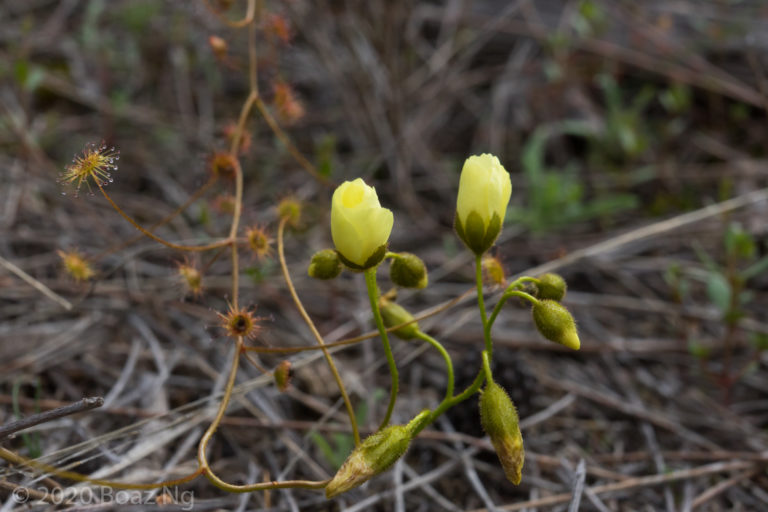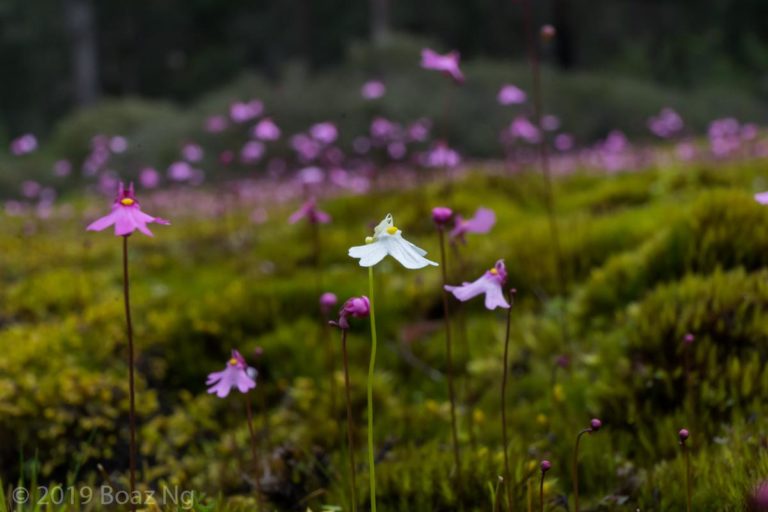Drosera bulbosa is a rosetted tuberous sundew endemic to Western Australia.
Drosera bulbosa is a medium sized plant, typically reaching around 5-10cm in diameter. The leaves are usually oval shaped, although it can vary from rounder to pointier depending on growth stage and locality. The central vein of the leaves is strongly raised. The flowers are numerous, with one flower per flower stalk. The stigmas are thin.
The species is common across south west Western Australia, where it is usually associated with granite outcrops. It is especially common in the Perth Hills and around Hyden, where it is found growing in winter-wet moss gardens on top of the rocks.
Drosera bulbosa is very closely related to Drosera coronata and Drosera major, which were considered a subspecies. Both latter species tend to have a more northerly distribution than D. bulbosa. Drosera bulbosa is distinguished from Drosera coronata by its white pollen and styles that form a dome shape, fully covering the ovary (the pollen of D. coronata is yellow and the styles do not cover the tip of the ovary). It is consistently smaller than Drosera major and has thinner leaves (the leaves of D. major are larger and are broader).
In the Perth hills it can be very similar to larger forms of Drosera tubaestylis, which shares the raised central vein of the leaves. Drosera bulbosa has thin stigmas whereas those of D. tubaestylis are short and stubby. It is somewhat similar in shape to Drosera rosulata but has a raised central vein (that of D. rosulata is sunken, giving the leaves a folded appearance.







